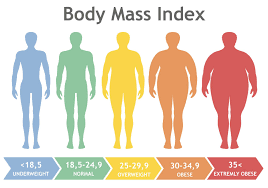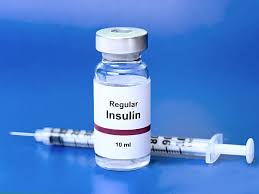FROM HALLOWEEN TO NEW YEAR’S: BEST AND WORST SEASONAL FOODS FOR YOUR TEETH
sunoaksdental • September 30, 2016
Treat Your Teeth Well This Season
Enjoying sweet treats on Halloween or a glass of good cheer on New Year’s Eve is part of the holiday season, but some seasonal fare can take a toll on the health of our teeth and gums.
According to a 2015 report by the National Center of Health Statistics, 27 percent of American adults between the ages of 20 and 64 have untreated tooth decay. Much of this damage is caused by foods that wear away the protective enamel on the surface of our teeth — and you can find many of these foods at seasonal parties and holiday gatherings.
However, there are plenty of delicious options that will allow you to embrace the holiday spirit while keeping your teeth healthy. Here are the top nine foods to either love or limit through the fall and winter holidays.
LOVE: Leafy, Green Vegetables
Raw spinach and kale may not top your list of holiday foods, but these vegetables actually grow best in cool-weather seasons like fall and winter. What’s more, they’re very healthy for your teeth. “Spinach, kale, collard greens — these and other high-fiber vegetables help ‘wash’ our teeth by requiring more chewing, which produces more saliva, a natural lubricant for our teeth,” says Laura Rutledge, MA, RD, a dietitian and assistant professor in the department of nutrition sciences at the University of Alabama at Birmingham. Rutledge recommends a salad of leafy greens, strawberries, goat cheese, nuts, and a little oil and vinegar.
LIMIT: Lemons, Limes, Oranges, and Grapefruit
Citrus contains vitamin C
and gives you a burst of refreshing flavor — and “vitamin C can help your gums heal,” says Leigh Anne Burns, MS, LDN/RD, a dietitian in practice with LSU Health in New Orleans. However, citrus foods are also highly acidic, which means they can cause enamel erosion, making you more susceptible to tooth decay. Adding an occasional squeeze of lemon or lime to your water is acceptable, but Burns recommends primarily enjoying these acidic fruits “at large meals.” That way, the saliva produced for the rest of the meal can help wash away acid and protect your teeth.
LOVE: Cheese
For good oral health, there’s no need to avoid the cheese plate at your next holiday party. Cheese contains casein, a protein with protective properties that helps fight cavities. It also contains calcium and phosphorus, which promote teeth re-mineralization, a naturally occurring process that helps prevent cavities, Rutledge explains. Calcium also helps promote overall bone health, and can be found in many dairy products, including yogurt and ice cream.
LIMIT: Candy
Candy may be a Halloween staple, but dentists stress that you should limit or avoid it due to its high sugar content. Bacteria in your mouth feed on sugar, producing acid that harms your teeth by wearing away the enamel. What’s more, Christmas favorites like toffee or candy canes are “sticky things that sit on the teeth,” says Matthew Messina, DDS, a dentist in practice in Fairview Park, Ohio, who is also a consumer advisor for the American Dental Association (ADA). If you do indulge in sweets, be sure to follow it up with drinking water or, even better, brushing and flossing.
LOVE: Berries (in Moderation)
Cranberries in the winter, huckleberries in the spring, blueberries, strawberries, and blackberries through the summer. For every season there is a berry, and they're packed with nutrients that are great for your overall health. “Berries are full of vitamins and minerals, are high in antioxidants, and are naturally sweet, which can help satisfy a sweet craving,” Rutledge says. Just remember: berries can have an acidic quality, so it's best to combine them with yogurt or drink water after eating them to limit potential damage to your teeth.
LIMIT: Dried Fruit
Dried fruits often find their way into holiday gift baskets, seasonal salads, and Thanksgiving stuffing. But don’t be fooled into thinking that eating dried fruit is the same for your teeth as their fresh counterparts. Dried fruits such as raisins, prunes, and apricots stick to your teeth, which causes a breeding ground for bacteria, increasing the chance of enamel erosion, explains Burns. If you do decide to snack on dried fruits, Burns says your best bet might be to mix them with nuts (think: trail mix), which can help scrape dried fruit residue off your teeth.
LOVE: Nuts
Mixed nuts show up at almost every fall and winter gathering, from sporting events to holiday cocktail parties. “Chewing on a nut gives you satisfaction as you work your teeth, and they are full of nutrients like phosphorus and calcium,” says Shawn Adibi, DDS, MEd, a dentist and associate professor at the University of Texas School of Dentistry in Houston. He adds that many people unnecessarily avoid nuts out of fear that chewing them can cause your teeth to chip or crack, but your teeth “are supposed to be strong enough to eat nuts,” he says. Just be sure to shell nuts before you eat them, as shelling them with your teeth is what can cause damage, like chipping and cracking.
LIMIT: Coffee and Alcohol
It’s hard to limit these beverages
around the holidays, but both coffee and alcohol can stain your teeth and dry out your mouth. “Bacteria that like a drier environment are more aggressive,” Messina says. The ADA warns that, over time, regularly drinking alcohol can lead to a much drier mouth, which increases the risk for both cavities and gum disease. Additionally, if you add sugar to your coffee, you may be doing even more damage to the enamel of your teeth. Many alcoholic beverages also contain sugar — and adding an acidic mixer to your drink can add to the harmful effects for your teeth.
LOVE: Crunchy Fruits and Veggies
Apple picking is a popular fall activity — and it’s good for your teeth, too. Apples, along with celery, carrots, cauliflower, and broccoli, are smart choices for your teeth
because they pack a healthy crunch that can scrub your teeth — such as to dislodge some of the sticky sweets you might have been eating during holidays like Halloween, Hanukkah, or Christmas. Like leafy greens, these high-fiber foods also stimulate saliva, which helps clean your mouth. “From a dental perspective, the more crunchy foods in your diet, the better,” Messina says. For the best crunch, eat these foods raw.
Everything in Moderation
In general, you don’t need to deprive yourself of your favorite fall and winter treats to maintain a healthy mouth
— just be sensible. A study of 533 adult men, 47 to 90 years old, found that those who followed a healthy diet — including dairy, fruits, vegetables, whole grains, and lean protein — had significantly fewer cavities than men who weren’t following those diet guidelines. The results were published in the September 2015 issue of the Journal of the American Geriatric Association. “You can eat anything in moderation,” says Dr. Messina. “And make sure you brush twice a day, floss once a day, and see your dentist regularly.”

By Laura Kelly - The Washington Times - Thursday, December 13, 2018 Obesity in the U.S. has reached a new high with a 5 percent increase since last year, according to a report published Wednesday ranking the healthiest states in the country. About 31.3 percent of U.S. adults are obese, up from 29.9 percent last year, according to the United Health Foundation’s annual report. “That’s incredibly concerning to us as a nation that this trend is going in the wrong direction instead of improving,” said Dr. Rhonda Randall , an adviser on the report. “This is something that is very much an opportunity to us — as individuals, as communities, at a state level and at a national level — to turn it around.” The annual report documents 35 measures to rank the country’s healthiest states, focusing on individual behavior, public policy, community and environment, and access to medical care. Hawaii is ranked as the healthiest state this year, with a low prevalence of obesity, smoking, depression and air pollution. The Aloha State also counts a high number of primary care doctors. However, 21 percent of adult Hawaiians — compared with the national average of 19 percent — overindulge in alcohol.

September 26, 2016 -- People with insulin resistance are more likely to have severe periodontitis than people without insulin resistance, according a new study. The authors found that insulin resistance can be considered a risk factor for periodontal disease, even for people with a normal weight. Researchers from South Korea and the U.S. studied the health records of nearly 6,000 South Koreans to see if insulin resistance corresponded to the severity of periodontal disease. They also looked for associations between periodontitis and type 2 diabetes, as well as obesity. "We hypothesized that insulin resistance aggravates the severity of periodontitis. Moreover, the associations between severe periodontitis and insulin resistance in nonobese adults with normal body mass index (BMI) or waist circumference were evaluated using representative national data," wrote the authors, led by In-Seok Song, DDS, PhD, from the department of oral and maxillofacial surgery at Korea University Anam Hospital ( Journal of Clinical Endocrinology & Metabolism , September 6, 2016). Linking perio disease, weight, and insulin resistance Insulin resistance occurs when cells don't properly respond to insulin, which is required to digest food. Previous studies have indicated an association between insulin resistance and periodontitis, which the researchers wanted to further explore, while also accounting for body weight. “This is the first report to demonstrate a significant relationship between insulin resistance and severe periodontitis in individuals with normal weight.” — Lead author In-Seok Song, DDS, PhD, and colleagues The international team of researchers used data from the 2008-2010 Korea National Health and Nutrition Examination Survey. In their analysis, they included 5,690 participants, all at least 30 years of age or older, who had moderate to severe periodontal disease, according to the Community Periodontal Index. Nearly 4,500 participants had moderate periodontitis, with pockets of 3.5 to 5.5 mm, while 1,202 had severe periodontitis, with pockets of 5.5 mm or greater. The researchers also looked at participants' Homeostatic Model Assessment of Insulin Resistance (HOMA-IR) scores, which quantifies a person's insulin resistance by multiplying their fasting insulin levels and fasting glucose levels. For this study, a man with a HOMA-IR score of 2.21 or higher was considered insulin-resistant, also known as metabolically obese. A woman was considered insulin-resistant if her score was 2.33 or higher. Anyone previously diagnosed with type 2 diabetes also was considered insulin-resistant. Overall, participants with severe periodontitis had significantly higher insulin-resistance values than those with moderate periodontal disease. Insulin-resistance valuesModerate periodontitis Severe periodontitis p- (n = 4,488) (n = 1,202) value HOMA-IR 2.182.33 0.0028 score After adjusting for weight, insulin-resistant participants with a normal weight also had significantly higher odds of having severe periodontitis than participants with a normal weight who were not insulin-resistant. The researchers also found people with type 2 diabetes were more likely to have severe periodontitis compared with the groups with normal glucose tolerance and impaired fasting glucose, a type of prediabetes.

Parents who wonder if dental sealants make a difference or not when it comes to protecting their kids from cavities will be glad to know they do reduce tooth damage, a new report shows. Federal health officials are encouraging more parents, health care providers, and schools to help make sure kids get them. Sealants prevent 80 percent of cavities in school-age children, according to a new CDC Vital Signs Report. Dental sealants are protective coatings painted onto the teeth that help keep bacteria out of the nooks and crannies where tooth decay can occur. The findings also show many children are missing out. About 60 percent of children ages 6 to 11 don’t get dental sealants, and kids who don’t have them get almost three times as many cavities. In a press conference today, CDC officials said more health care providers, school administrators and parents need to be aware of the benefits of the procedure. Dental sealants are generally painted onto a child’s back teeth, where cavities are most likely to develop, said Dr. Mary Hayes, a pediatric dentist in Chicago and a spokesperson for the American Dental Association. “Sealant is a resin material that infiltrates the area where the grooves of the teeth are. There are many bacteria in the mouth and they will get into those grooves and produce acid and you’ll get tooth damage. The sealant blocks bacteria from getting into those areas. This resin material diminishes or prevents a spot where decay would normally form,” said Hayes. She recommends sealants be used at about age 6 and then again around age 12 when adult molars come in. The treatment generally lasts from four to eight years. Temperature and the way a child chews, as well as what they eat, can affect the lifespan of a sealant. “Nothing we put in the mouth is perfect – hot chocolate and coffee and ice. And the pressure of our bite is pretty intense. You can get a micro-crack in a tooth, much less a sealant,” said Hayes. Some parents are wary of sealants, though, because they contain BPA , or bisphenol A. BPA is an industrial chemical used to make some plastics and resins used in many types of products, including food packaging . It’s been around since the 1960s. Some research shows BPA can seep into food or beverages from containers made with the material, and exposure to the chemical has been linked to possible health concerns in the brain, behavior and the prostate gland of fetuses, infants and children, according to Mayo Clinic experts. Other research suggests a possible link between BPA and increased blood pressure. But the Food and Drug Administration says it is safe at very low levels. Hayes said dental sealants have very small amounts of BPA compared to other common exposures. BPA levels in sealants were at one time higher. “We use materials now where conceivably there is some BPA in them but it is minuscule and has been measured at .001 percent. For the average 6-year-old, 96 percent of their exposure to BPA comes from food and drinks, and the rest is from dust and air and paper receipts,” among other sources, she said. Other reasons some parents skip getting sealants for their children include the cost or lack of insurance , or the inconvenience and time it takes to visit a dentist, said Hayes. But the new report suggests it’s time and money well spent, she said. © 2016 CBS Interactive Inc. All Rights Reserved.







